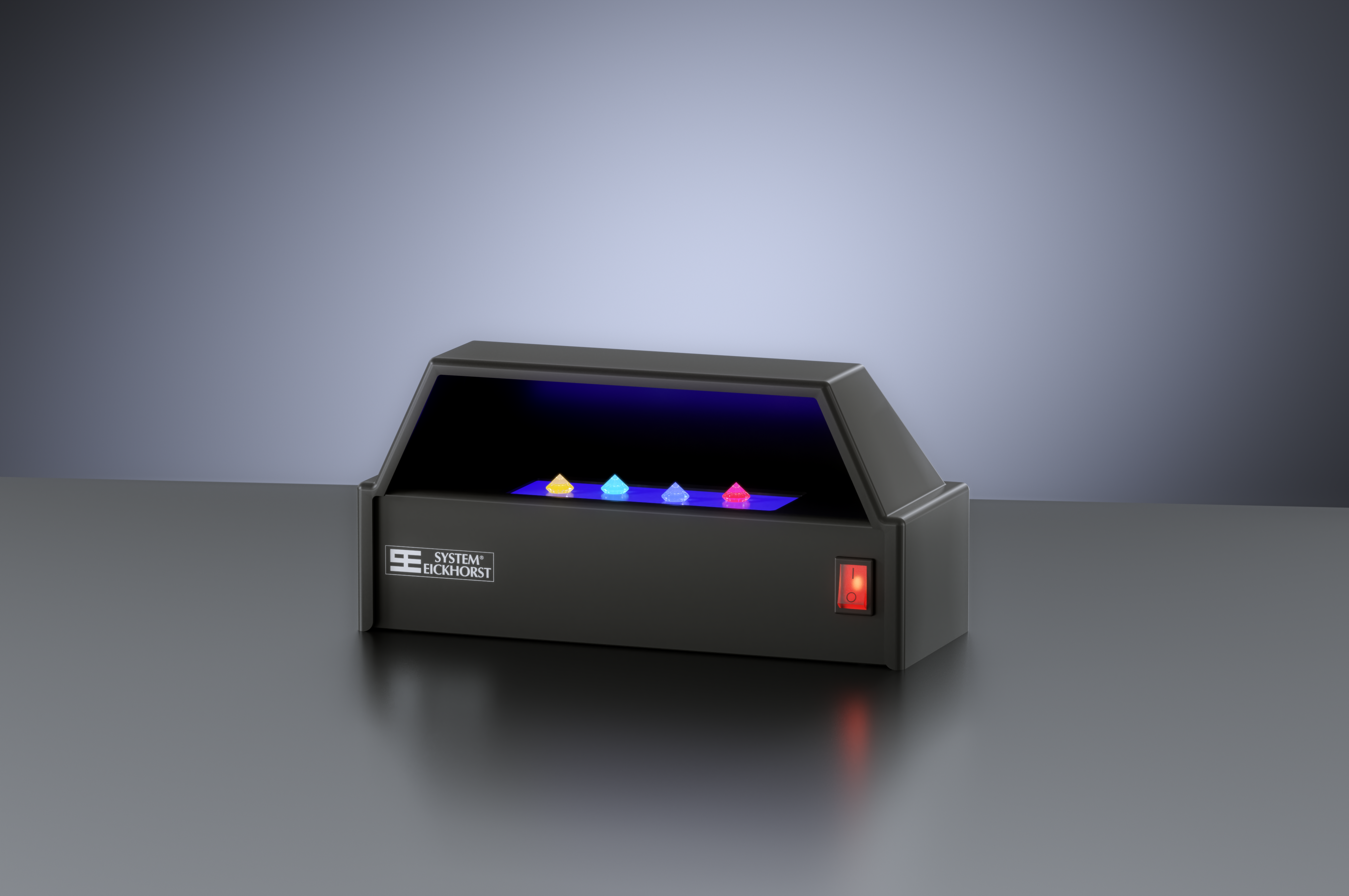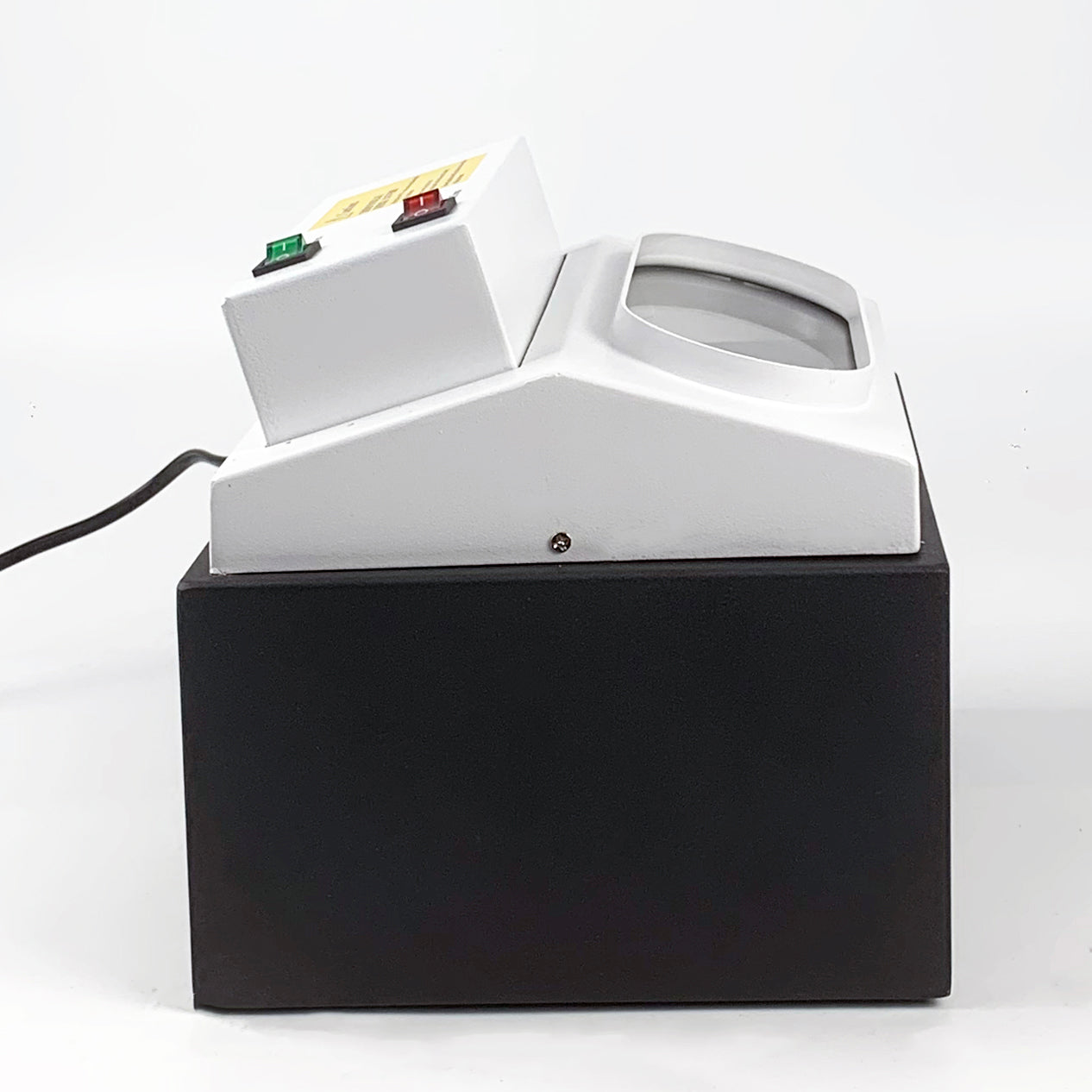includes both fluorescence and phosphorescence
| Fluorescence | Phosphorescence |
|
Fluorescence is a rapid process where the material is excited by a photon (light particle) and almost immediately (of the order of nanoseconds) releases a photon and returns to its basic state. This light is usually lower energy and thus longer wavelengths than the original light. Fluorescence ends almost immediately after the light source is removed. |
Phosphorescence is similar to fluorescence, but with one key difference: in phosphorescent material, the excited state is "captured" for a longer period of time (order of milliseconds to hours) due to the prohibited transitions between energy levels. This means that the phosphorescent material will be lit even after the light source has been removed. |
Using the reaction of diamonds to ultraviolet radiation to identify synthetic diamonds
- Natural diamonds fluoresce most often blue, green or yellow
- The fluorescence intensity is variable
- They show stronger fluorescence at longer UV wavelengths (LWUV or Longwave UV) than in shorter UV wavelengths (SWUV or Shortwave UV)
- In most natural diamonds, fluorescence is more pronounced in LWUV radiation than Swuv
- Some natural diamonds are inert: do not show fluorescence
- HPHT synthetic diamonds have fluorescence under SWUV significantly orange to red
- HPHT also have a distinctive phosphorescence under SWUV
HPHT diamonds often phosphoresuction after SWUV exposure, unlike natural diamonds
- Synthetic diamonds created by the CVD method react to the SUV orange to red
- Synthetic diamonds made by HPHT or CVD methods usually react more at shorter UV wavelengths (swuv), while natural diamonds are the other way around










